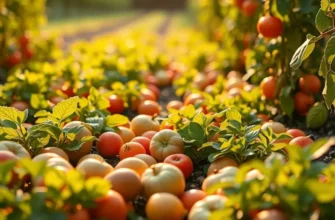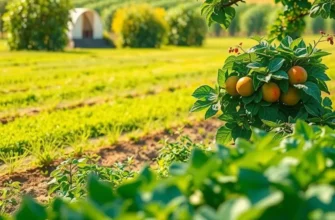Cooking methods impact the nutritional value of vegetables. Among these, boiling is often scrutinized for potentially being detrimental to nutrient retention. This article delves into whether boiling vegetables really leads to nutrient waste and provides insights on how to preserve their goodness while preparing wholesome meals.
The Science of Nutrient Loss in Boiling

Boiling vegetables, a common cooking method worldwide, involves submerging them in water at high temperatures. This process, while simple, often leads to the loss of essential nutrients, particularly vitamins and minerals.
When vegetables are boiled, water-soluble vitamins, such as vitamin C and B vitamins, are most vulnerable to loss. These nutrients often leach into the cooking water, reducing their concentrations in the food itself. For instance, vitamin C, a potent antioxidant, is highly sensitive to heat and water. Boiling can cause up to 50% of vitamin C to be lost from vegetables like broccoli and spinach. Similarly, B vitamins, including thiamine, riboflavin, and folate, are equally affected by the combination of high temperature and immersion in water.
Minerals are generally more stable during boiling as they are inorganic. However, some quantity may still leach into the boiling water, particularly in vegetables with high water content. Potassium and calcium may slightly decrease, although not as significantly as water-soluble vitamins.
The extent of nutrient loss in boiling is influenced by cooking time and temperature. Longer boiling times and higher temperatures exacerbate nutrient degradation. Quick boiling at lower temperatures can help retain some nutrient value, but it is still not as efficient as other cooking methods.
Certain vegetables fare differently under boiling. For non-starchy vegetables like spinach and broccoli, where the nutrient concentration is a key factor, boiling can significantly reduce their nutritional value. On the contrary, starchy vegetables, such as potatoes and carrots, may retain more nutrients when boiled, due to their tougher cellular structures that resist water permeation.
Comparatively, steaming, roasting, or microwaving may preserve more nutrients in many vegetables. Steaming avoids direct contact with water, thereby reducing the leaching of water-soluble vitamins. Roasting involves dry heat, which minimizes nutrient loss. Meanwhile, microwaving, due to its short cooking times and lower temperatures, can effectively retain nutrients in vegetables. Explore other low-waste cooking methods for nutrient retention.
Ultimately, while boiling is quick and simple, it is not always the best method for nutrient preservation. Understanding these dynamics can guide healthier cooking choices, ensuring vegetables provide the most nutritional benefit possible.
Maximizing Nutrients While Boiling

Boiling is a common cooking method known for its simplicity. Yet, it can lead to nutrient loss if not done wisely. Here are some techniques to retain the nutritional value of vegetables while boiling.
Firstly, consider the quantity of water used. Using minimal water reduces nutrient leaching. The less water you use, the fewer nutrients escape into it. Bringing just enough water to cover the vegetables is a good starting point. Once boiling, reduce heat and let them simmer instead of a continuous hard boil.
Optimal cooking time is crucial. Vegetables should be cooked until just tender to the fork—overcooking them leads to a greater loss in nutrition. A handy rule is to undercook slightly if you plan to further cook the vegetables in a dish or reheat them later.
Incorporating methods like steaming or blanching also helps in nutrient retention. Steaming uses indirect heat and prevents nutrients from dissolving into water. On the other hand, blanching involves briefly boiling and then plunging vegetables in ice water to preserve their color, flavor, and nutritional content. Both methods are excellent alternatives when boiling is not necessary.
Another consideration is the use of post-cooking practices to recover lost nutrients. The water used in boiling often holds vitamins and minerals that leach out during cooking. Instead of discarding, repurpose this nutrient-rich liquid in soups or sauces. This method not only enhances the flavor but also reduces waste, aligning with low-waste cooking practices, which are key to a more sustainable kitchen.
Choosing the right vegetables also affects nutrient retention during boiling. Leafy greens, like spinach, are delicate and lose nutrients faster. Root vegetables, such as carrots and potatoes, tend to retain more nutrients even after prolonged cooking.
Lastly, acknowledge that not all cooking methods suit every vegetable or meal. Adopting a diverse approach to cooking ensures a variety of flavors and maximum nutrient preservation. Balancing boiling with steaming or roasting can broaden your culinary palette while ensuring nutritional adequacy.
In conclusion, boiling vegetables doesn’t have to mean nutrient wastage. With mindful strategies, such as using minimal water, optimizing cooking times, and utilizing cooking water, you can maintain their nutritional integrity. Embracing different cooking techniques allows for a more nourishing and diverse diet.
Final words
In conclusion, while boiling can lead to some nutrient loss, especially in water-soluble vitamins, it doesn’t mean that vegetables are devoid of health benefits afterward. By understanding the science behind boiling and applying techniques to minimize nutrient loss, you can enjoy nutritious and delicious meals. Remember, including a variety of cooking methods in your meal preparation will provide a broader spectrum of nutrients and flavors, ensuring balanced nutrition.








